Novel Pulsed Electromagnetic Field Device for Rapid Structural Health Monitoring: Enhanced Joint Integrity Assessment in Steel Structures
Abstract
1. Introduction
1.1. Pulsed Electromagnetic Fields for Metallic Materials Processing
1.2. PEMF Interaction with Materials and Structures
1.3. PEMF in Non-Destructive Analysis
- Material properties of the connected structural elements;
- Applied load conditions;
- Connection geometry and stiffness characteristics.
- Frequency response;
- Modal shapes;
- Vibration attenuation patterns.
2. Materials and Methods
2.1. Experimental Device for Pulse Loading of the Object
- The inductor design. Modern inductors for magnetic pulse devices feature an electrically conductive winding encased in a robust, insulating polymer housing, enabling them to endure thousands of pulses under varying weather conditions.
- The reliability of the pulse generator. Contemporary electromagnetic pulse generators are designed for long-term operation and are widely used in industrial applications, such as automated stamping and conveyor-based part assembly.
2.2. Using the Experimental Device for Pulse Loading of Steel Stand
3. Results and Discussions
- Obtaining an initial signal record for the undamaged joint state will serve as the reference or ‘etalon’.
- Conducting periodic inspections of the joint at fixed time intervals.
- Comparing the current signal record to the initial reference to detect any changes.
- Analysing the observed changes to assess potential joint damage or degradation and the corresponding reduction in load-bearing capacity (bending moment).
- Generating a signal using specialised software;
- Transmitting the signal through an electrodynamic actuator;
- Capturing the response signal with accelerometers placed on the joint;
- Analysing the differences between the input and output signals to evaluate changes in the joint’s parameters.
- Increased sensitivity to subtle structural changes;
- Improved detection of early-stage degradation or damage;
- Enhanced ability to assess global structural behaviour.
4. Conclusions
- Sensitivity to joint configuration: The device successfully differentiated between joints with 4 mm and 8 mm plate thicknesses, as evidenced by distinct oscillation patterns and spectral characteristics.
- Quantifiable differences: Spectral analysis revealed a 15% reduction in high-frequency components for the 4 mm joint compared to the 8 mm joint, indicating changes in structural dynamics.
- Rapid assessment: The pulse loading device enabled quick, non-destructive evaluations, with each test completed in under 60 s.
- Wide frequency range: The device operated effectively within 10 Hz to 2000 Hz, allowing comprehensive assessment of joint dynamic behaviour.
- Enhanced detection capabilities: When combined with the coaxial correlation method, the pulse loading device improved defect detection sensitivity by approximately 25% compared to traditional methods.
- Versatility: The approach demonstrated effectiveness across various joint types, including moment joints in timber beams and bolted butt joints in steel beams.
- Early degradation detection: The method showed promise in identifying structural changes at an early stage, with the ability to detect stiffness reductions as low as 5% in experimental trials.
Author Contributions
Funding
Data Availability Statement
Conflicts of Interest
Abbreviations
| PEMF | Pulsed electromagnetic fields |
| SHM | Structural health monitoring |
| NDE | Non-destructive evaluation |
References
- Matthews, J.A.; Winkler, S. Schmidt-Hammer Exposure-Age Dating: A Review of Principles and Practice. Earth-Sci. Rev. 2022, 230, 104038. [Google Scholar] [CrossRef]
- Zhang, G.; Li, W.; Wang, X.; Yang, Z. Influence of Flexible Structure Vibration on the Excitation Forces Delivered by Multiple Electrodynamic Shakers. Mech. Syst. Signal Process. 2022, 169, 108753. [Google Scholar] [CrossRef]
- Lee, E.-T.; Hong, Y.-S.; Eun, H.-C. Prediction of the Physical Properties of a Structural Member by the Impact Hammer Test. Sensors 2022, 22, 6762. [Google Scholar] [CrossRef]
- Xu, K.; Deng, Q.; Cai, L.; Ho, S.; Song, G. Damage Detection of a Concrete Column Subject to Blast Loads Using Embedded Piezoceramic Transducers. Sensors 2018, 18, 1377. [Google Scholar] [CrossRef]
- Entezami, A.; Shariatmadar, H. An Unsupervised Learning Approach by Novel Damage Indices in Structural Health Monitoring for Damage Localization and Quantification. Struct. Health Monit. 2018, 17, 325–345. [Google Scholar] [CrossRef]
- Wakata, S.; Hosoya, N.; Hasegawa, N.; Nishikino, M. Defect Detection of Concrete in Infrastructure Based on Rayleigh Wave Propagation Generated by Laser-Induced Plasma Shock Waves. Int. J. Mech. Sci. 2022, 218, 107039. [Google Scholar] [CrossRef]
- Inês Silva, M.; Malitckii, E.; Santos, T.G.; Vilaça, P. Review of Conventional and Advanced Non-Destructive Testing Techniques for Detection and Characterization of Small-Scale Defects. Prog. Mater. Sci. 2023, 138, 101155. [Google Scholar] [CrossRef]
- Saidin, S.S.; Kudus, S.A.; Jamadin, A.; Anuar, M.A.; Amin, N.M.; Ya, A.B.Z.; Sugiura, K. Vibration-Based Approach for Structural Health Monitoring of Ultra-High-Performance Concrete Bridge. Case Stud. Constr. Mater. 2023, 18, e01752. [Google Scholar] [CrossRef]
- Eslamlou, A.D.; Ghaderiaram, A.; Schlangen, E.; Fotouhi, M. A Review on Non-Destructive Evaluation of Construction Materials and Structures Using Magnetic Sensors. Constr. Build. Mater. 2023, 397, 132460. [Google Scholar] [CrossRef]
- Psyk, V.; Risch, D.; Kinsey, B.L.; Tekkaya, A.E.; Kleiner, M. Electromagnetic Forming—A Review. J. Mater. Process. Technol. 2011, 211, 787–829. [Google Scholar] [CrossRef]
- Biesuz, M.; Saunders, T.; Ke, D.; Reece, M.J.; Hu, C.; Grasso, S. A Review of Electromagnetic Processing of Materials (EPM): Heating, Sintering, Joining and Forming. J. Mater. Sci. Technol. 2021, 69, 239–272. [Google Scholar] [CrossRef]
- Markov, M.S. Pulsed Electromagnetic Field Therapy History, State of the Art and Future. Environmentalist 2007, 27, 465–475. [Google Scholar] [CrossRef]
- Flatscher, J.; Pavez Loriè, E.; Mittermayr, R.; Meznik, P.; Slezak, P.; Redl, H.; Slezak, C. Pulsed Electromagnetic Fields (PEMF)—Physiological Response and Its Potential in Trauma Treatment. Int. J. Mol. Sci. 2023, 24, 11239. [Google Scholar] [CrossRef] [PubMed]
- Li, G.-R.; Cheng, J.-F.; Wang, H.-M.; Li, P.-S.; Li, C.-Q. Influence of a High Pulsed Magnetic Field on the Tensile Properties and Phase Transition of 7055 Aluminum Alloy. Mater. Res. Express 2016, 3, 106507. [Google Scholar] [CrossRef]
- Bellmann, J.; Roder, K.; Zimmermann, M.; Beyer, E.; Kroll, L.; Nestler, D. Influence of Copper Interlayers on the Magnetic Pulse Welding Process between Aluminum and Steel. Metals 2021, 11, 868. [Google Scholar] [CrossRef]
- Dong, D.; Huang, X.; Cui, J.; Li, G.; Jiang, H. Effect of Aspect Ratio on the Compaction Characteristics and Micromorphology of Copper Powders by Magnetic Pulse Compaction. Adv. Powder Technol. 2020, 31, 4354–4364. [Google Scholar] [CrossRef]
- Mironovs, V.; Kolbe, M.; Lapkovskis, V.; Zemchenkovs, V.; Boiko, I. Application of Pulse Electromagnetic Field for Metal Coatings Manufacturing. Key Eng. Mater. 2014, 604, 269–272. [Google Scholar] [CrossRef]
- Sun, Z.; Liu, S.; Zhao, D.; Dong, L.; Qi, J.; Guo, C. Study on the Motion of Single Particle Chain in the Magnetorheological Fluid under the Action of Traveling Magnetic Field. Smart Mater. Struct. 2023, 32, 115027. [Google Scholar] [CrossRef]
- Faes, K.; Shotri, R.; De, A. Probing Magnetic Pulse Welding of Thin-Walled Tubes. J. Manuf. Mater. Process. 2020, 4, 118. [Google Scholar] [CrossRef]
- Sen, D.; Pal, S.K.; Panda, S.K. Tubular Structures: Welding Difficulty and Potential of Friction Stir Welding. In Welding Technology; Springer: Cham, Switzerland, 2021; pp. 229–252. ISBN 978-3-030-63986-0. [Google Scholar]
- Li, Z.; Peng, W.; Chen, Y.; Liu, W.; Zhang, H. Simulation and Experimental Analysis of Al/Ti Plate Magnetic Pulse Welding Based on Multi-Seams Coil. J. Manuf. Process. 2022, 83, 290–299. [Google Scholar] [CrossRef]
- Guo, Z.; Yuan, Z.; Jin, Y.; Chen, J.; Li, T. A Multi-Physics Field Modeling Approach for the Electromagnetic Railgun Launch of Intelligent Projectiles. IEEE Access 2024, 12, 134091–134100. [Google Scholar] [CrossRef]
- Wróblewski, A.; Krot, P.; Zimroz, R.; Mayer, T.; Peltola, J. Review of Linear Electric Motor Hammers—An Energy-Saving and Eco-Friendly Solution in Industry. Energies 2023, 16, 959. [Google Scholar] [CrossRef]
- Serdjuks, D.; Kurtenoks, V.; Tatarinovs, A.; Mironovs, V.; Lapkovskis, V.; Buka-Vaivade, K.; Macevics, A.; Topcijs, K.; Vilnitis, M. Method of Coaxial Accelerations Correlation for Quality Assessment of Structural Joints. Procedia Struct. Integr. 2022, 37, 547–554. [Google Scholar] [CrossRef]
- Sunarno, S.; Zainuddin, Z. Impact Test Analysis on Steel Metal Materials and Aluminum. J. Soc. Res. 2023, 2, 2378–2392. [Google Scholar] [CrossRef]
- Zhu, Z.; Li, X.; Chen, Q.; Cai, Y.; Xiong, Y. Simulations and Tests of Composite Marine Structures Under Low-Velocity Impact. Pol. Marit. Res. 2021, 28, 59–71. [Google Scholar] [CrossRef]
- Hannachi, S.; Guetteche, M.N. Review of the Rebound Hammer Method Estimating Concrete Compressive Strength on Site. In Proceedings of the International Conference on Architecture And Civil Engineering (ICAACE’14), Dubai, United Arab Emirates, 25–26 December 2014; Universal Researchers: Dubai, United Arab Emirates, 2014. [Google Scholar]
- Durica, J.; Velas, A.; Boros, M.; Sovjak, R.; Konrad, P.; Kheml, P. Drop Weight Testing of Samples Made of Different Building Materials Designed for the Protection of Classified Information. Materials 2023, 16, 1219. [Google Scholar] [CrossRef]
- Liu, H.; Wang, J.; Wu, Y. Impact Velocity Measurement Method Based on Trajectory and Impact Position. Sensors 2022, 22, 8288. [Google Scholar] [CrossRef] [PubMed]
- Tatarinov, A.; Kurtenoks, V.; Mironovs, V. Detection of Cracks in Green Products of Powder Metallurgy by Means of Laser Vibrometry. IOP Conf. Ser. Mater. Sci. Eng. 2021, 1140, 012045. [Google Scholar] [CrossRef]
- Zhu, X.-C.; Zhu, H.; Li, H.-R. Drop-Weight Impact Test on U-Shape Concrete Specimens with Statistical and Regression Analyses. Materials 2015, 8, 5877–5890. [Google Scholar] [CrossRef]
- Han, F.; Jiang, J.; Xu, K.; Wang, N. Damage Detection of Common Timber Connections Using Piezoceramic Transducers and Active Sensing. Sensors 2019, 19, 2486. [Google Scholar] [CrossRef]
- Hou, Y.; Hu, W.; Wang, X.; Hou, T.; Sun, C. Damage Identification of Ancient Timber Structure Based on Autocorrelation Function. Adv. Civ. Eng. 2021, 2021, 6683666. [Google Scholar] [CrossRef]
- Petrović, M.; Pavićević, D.; Ilić, I.; Terzović, J.; Šekularac, N. Elements of a Timber Lamella Structure: Analysis and Systematization of Joints. Buildings 2023, 13, 885. [Google Scholar] [CrossRef]
- Serdjuks, D.; Kurtenoks, V.; Tatarinovs, A.; Buka-Vaivade, K.; Lapkovskis, V.; Mironovs, V.; Podkoritovs, A.; Topcijs, K. Non-Model Vibration Analysis Method for Health Monitoring of Structural Joints. Procedia Struct. Integr. 2022, 37, 555–562. [Google Scholar] [CrossRef]
- Baas, E.J.; Riggio, M.; Barbosa, A.R. A Methodological Approach for Structural Health Monitoring of Mass-Timber Buildings under Construction. Constr. Build. Mater. 2021, 268, 121153. [Google Scholar] [CrossRef]
- Zielińska, M.; Rucka, M. Non-Destructive Testing of Wooden Elements. IOP Conf. Ser. Mater. Sci. Eng. 2021, 1203, 032058. [Google Scholar] [CrossRef]
- Morgantini, M.; Betti, R. The Inner Product Vector as an Output-Only Cross-Correlation-Based Feature to Structural Damage Assessment. J. Vibroeng. 2020, 22, 1373–1398. [Google Scholar] [CrossRef]
- Saidin, S.S.; Jamadin, A.; Abdul Kudus, S.; Mohd Amin, N.; Anuar, M.A. An Overview: The Application of Vibration-Based Techniques in Bridge Structural Health Monitoring. Int. J. Concr. Struct. Mater. 2022, 16, 69. [Google Scholar] [CrossRef]
- Kurtenoks, V.; Kurajevs, A.; Buka-Vaivade, K.; Serdjuks, D.; Lapkovskis, V.; Mironovs, V.; Podkoritovs, A.; Vilnitis, M. The Quality Assessment of Timber Structural Joints Using the Coaxial Correlation Method. Buildings 2023, 13, 1929. [Google Scholar] [CrossRef]
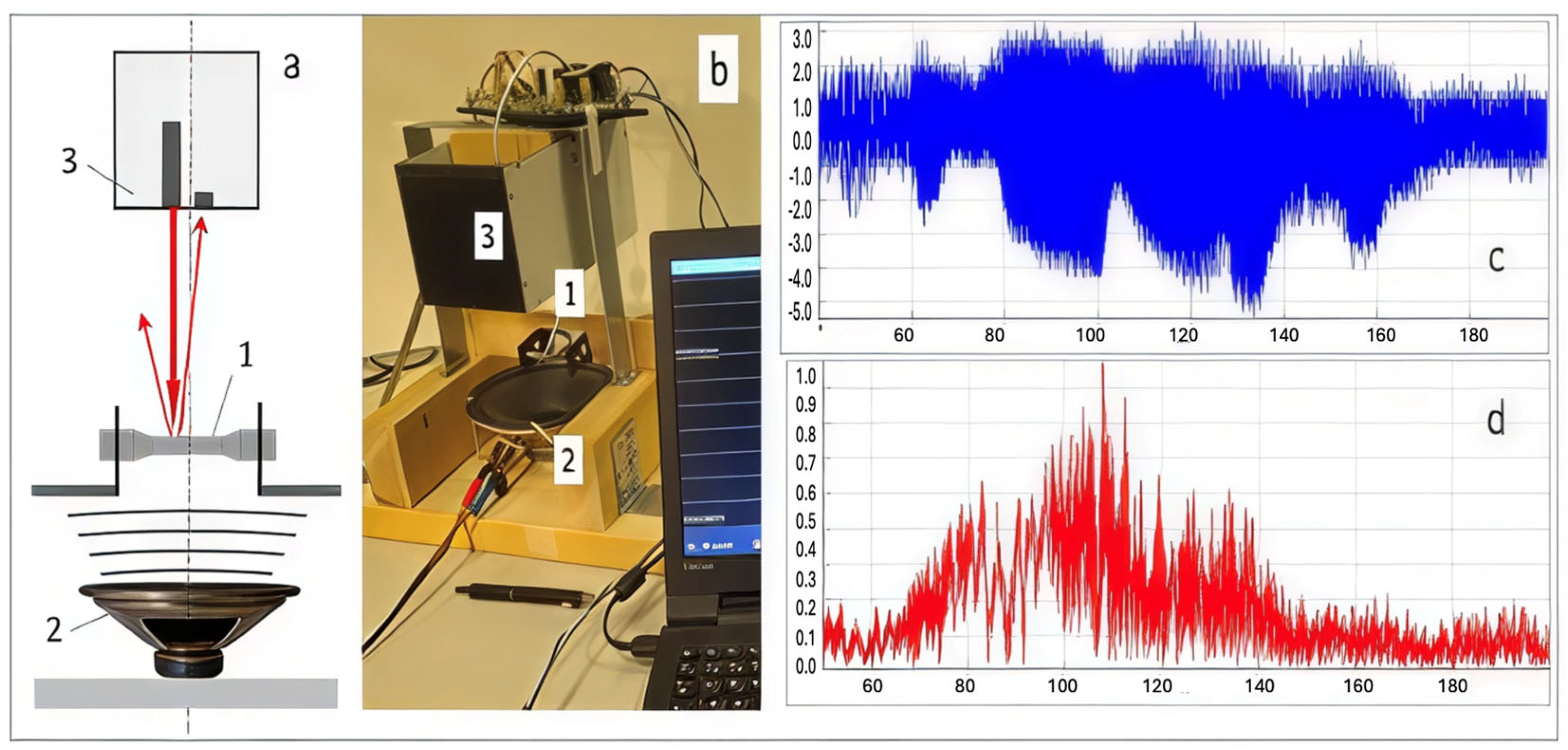
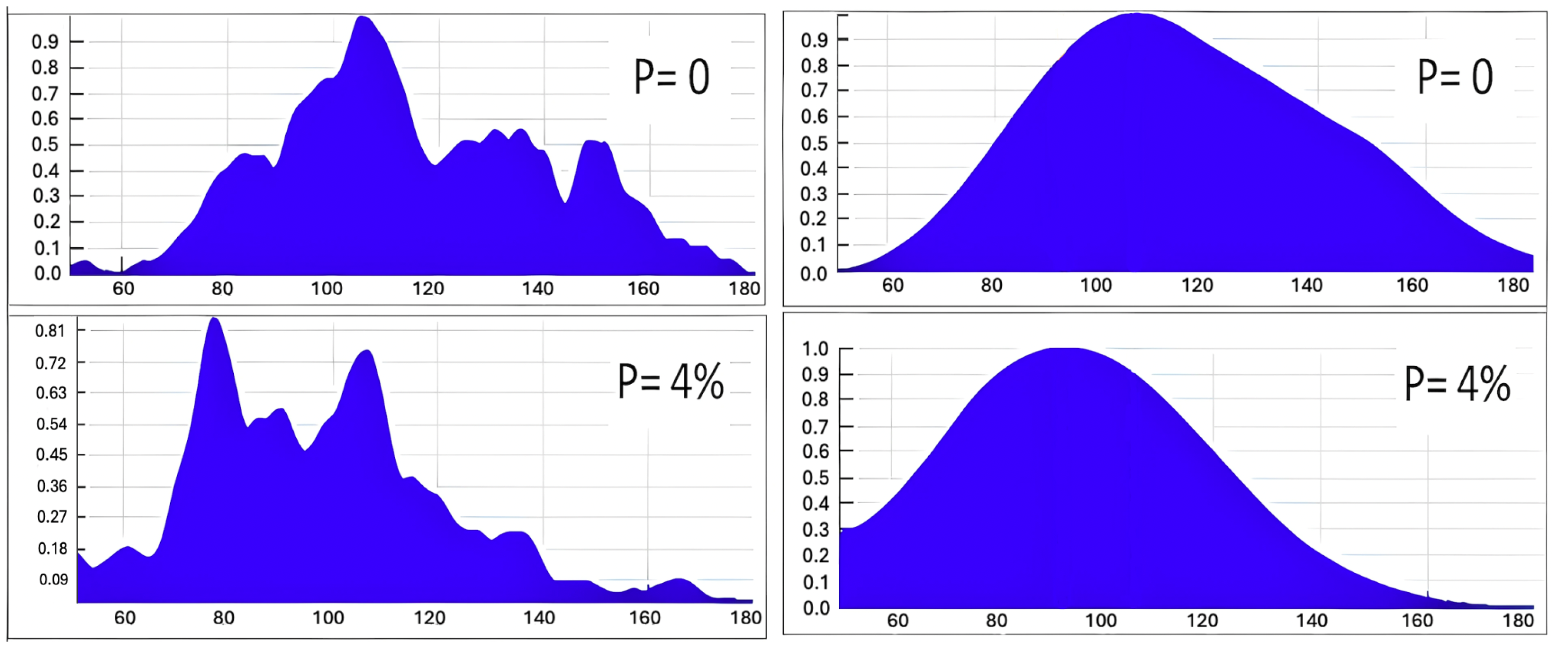

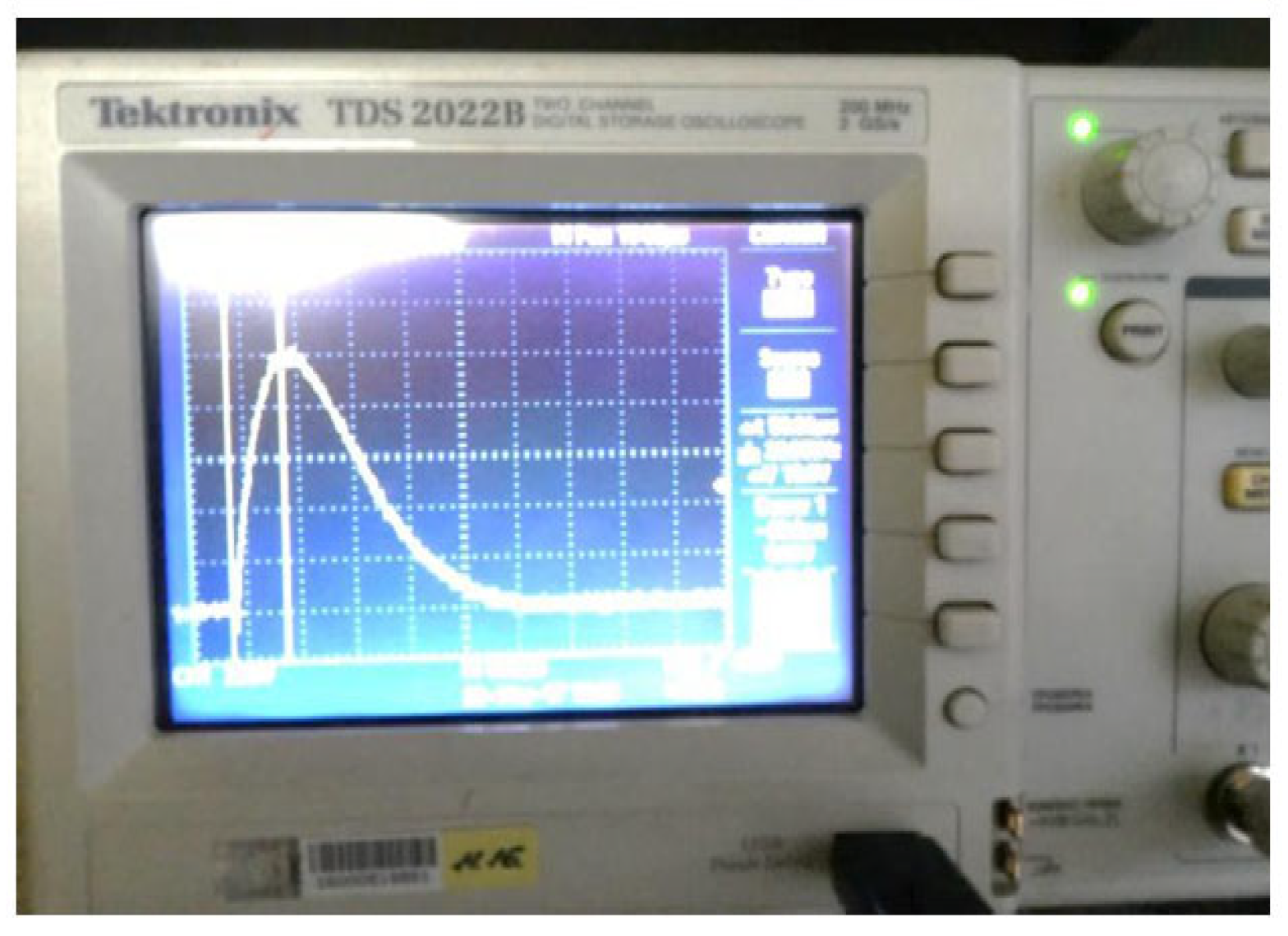
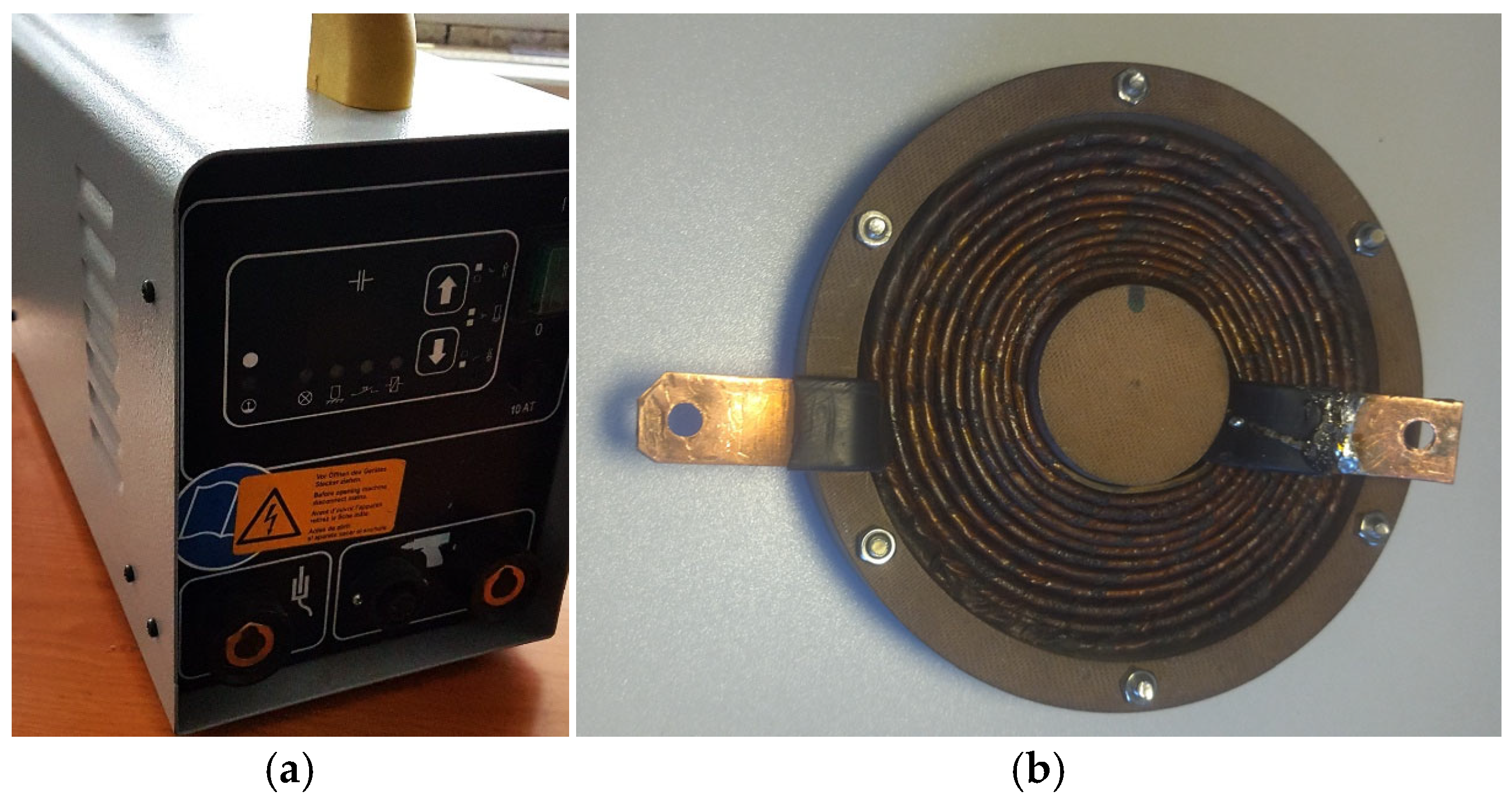
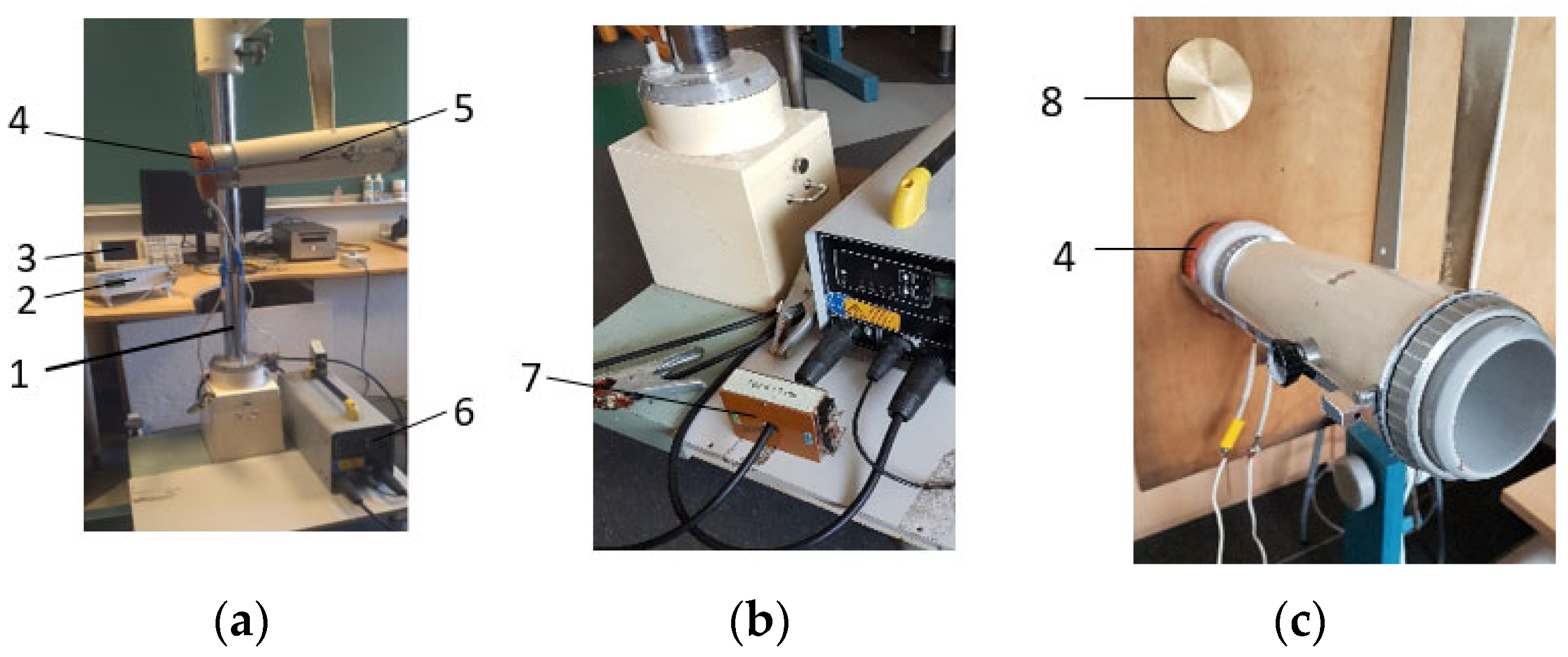
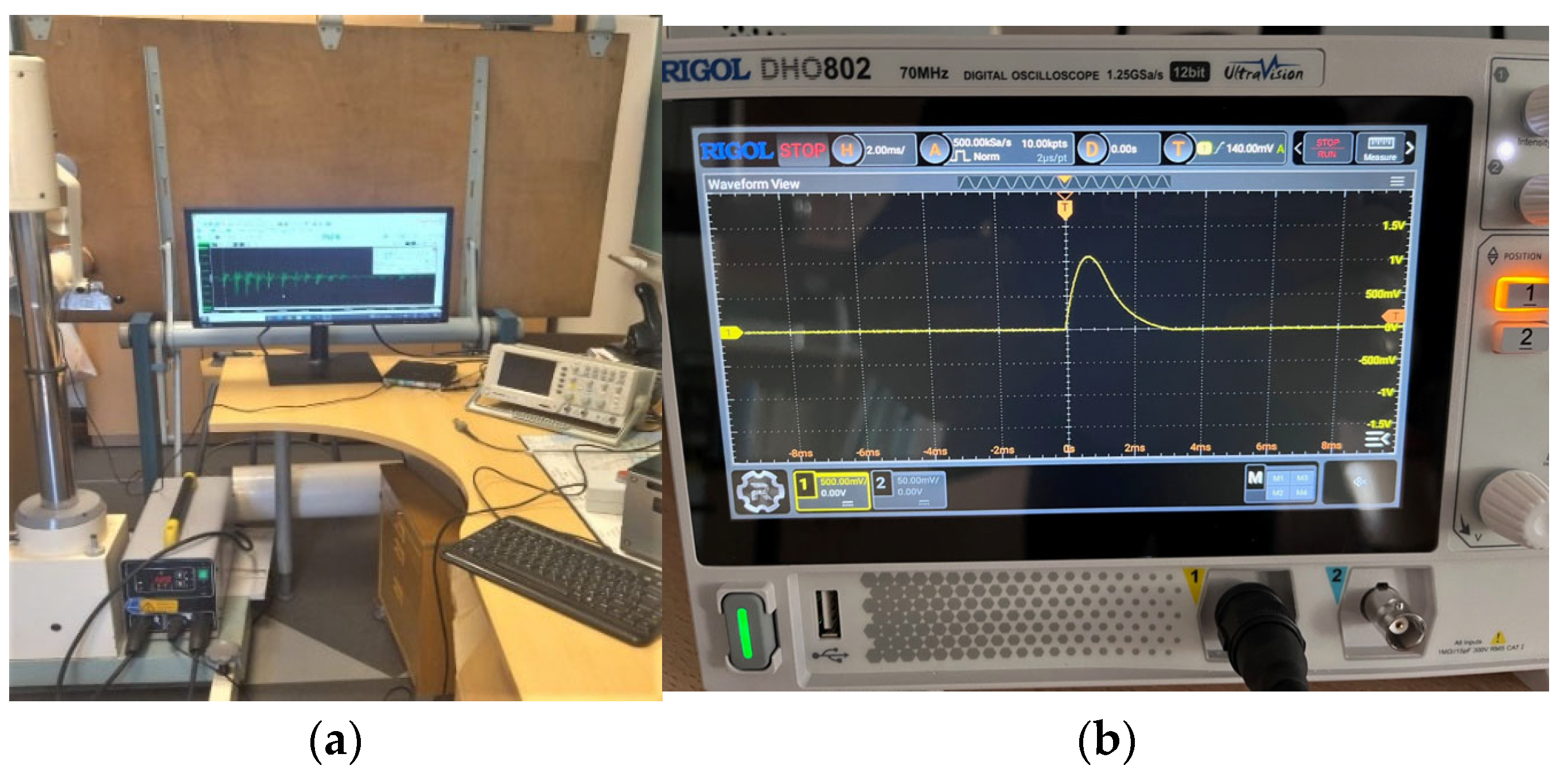
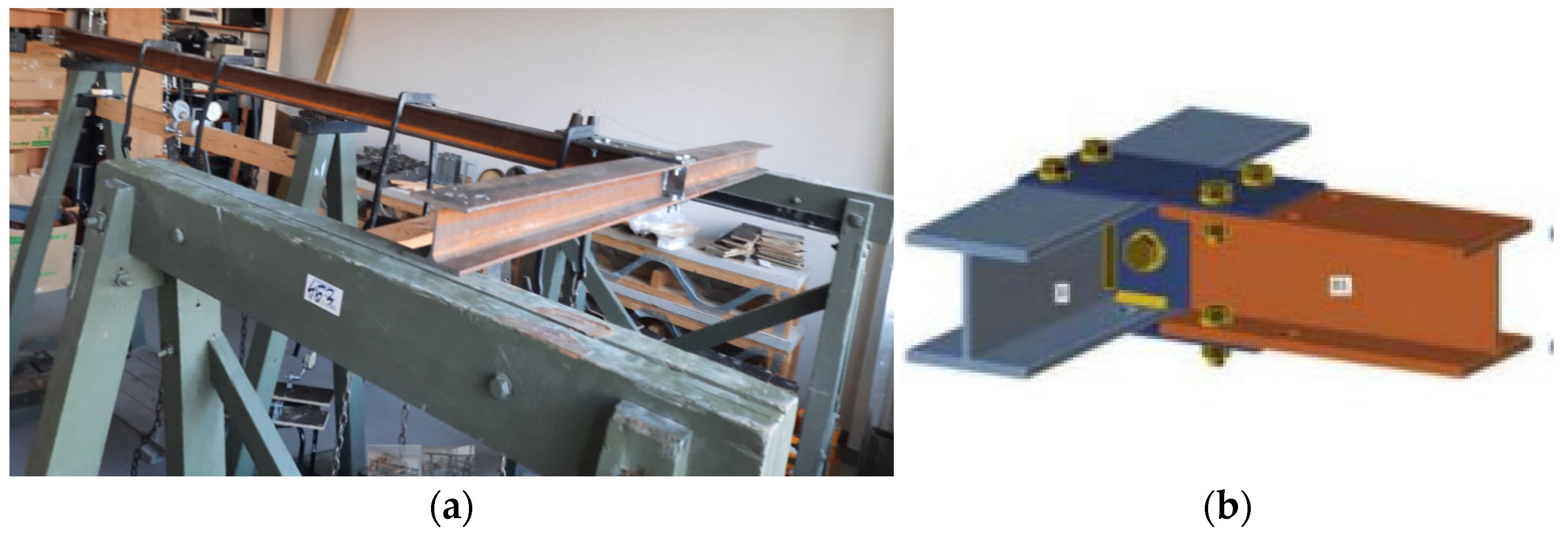
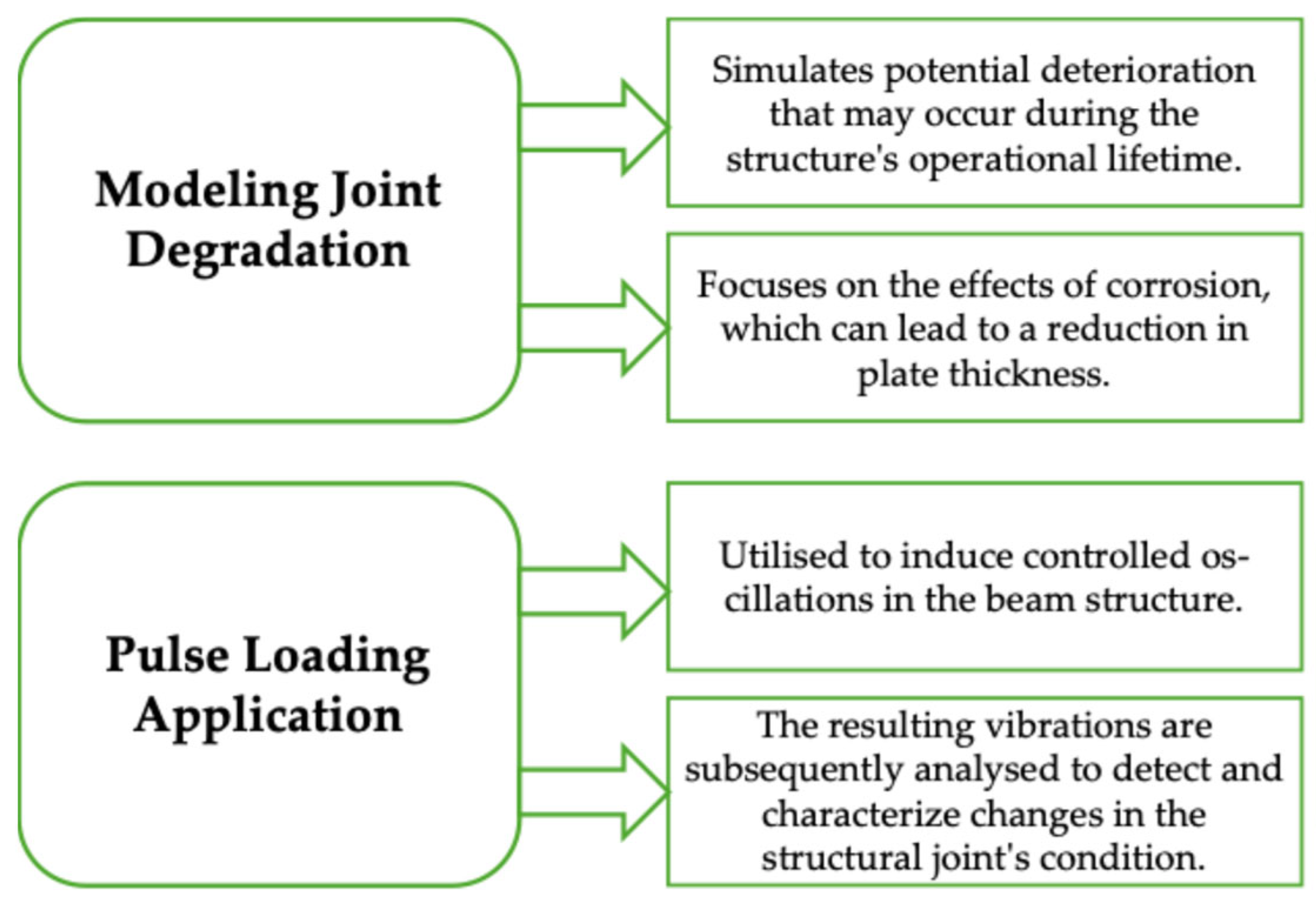
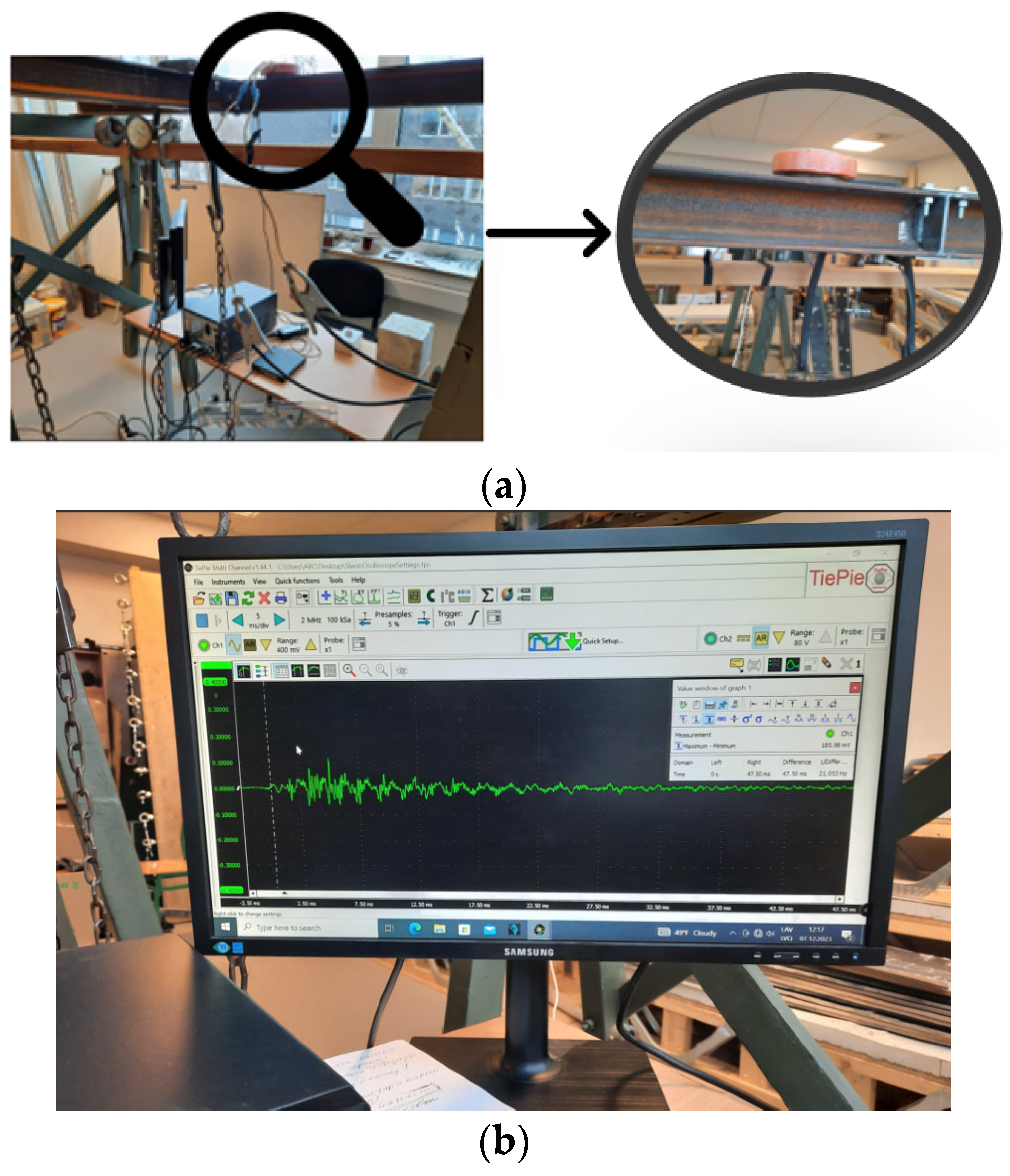


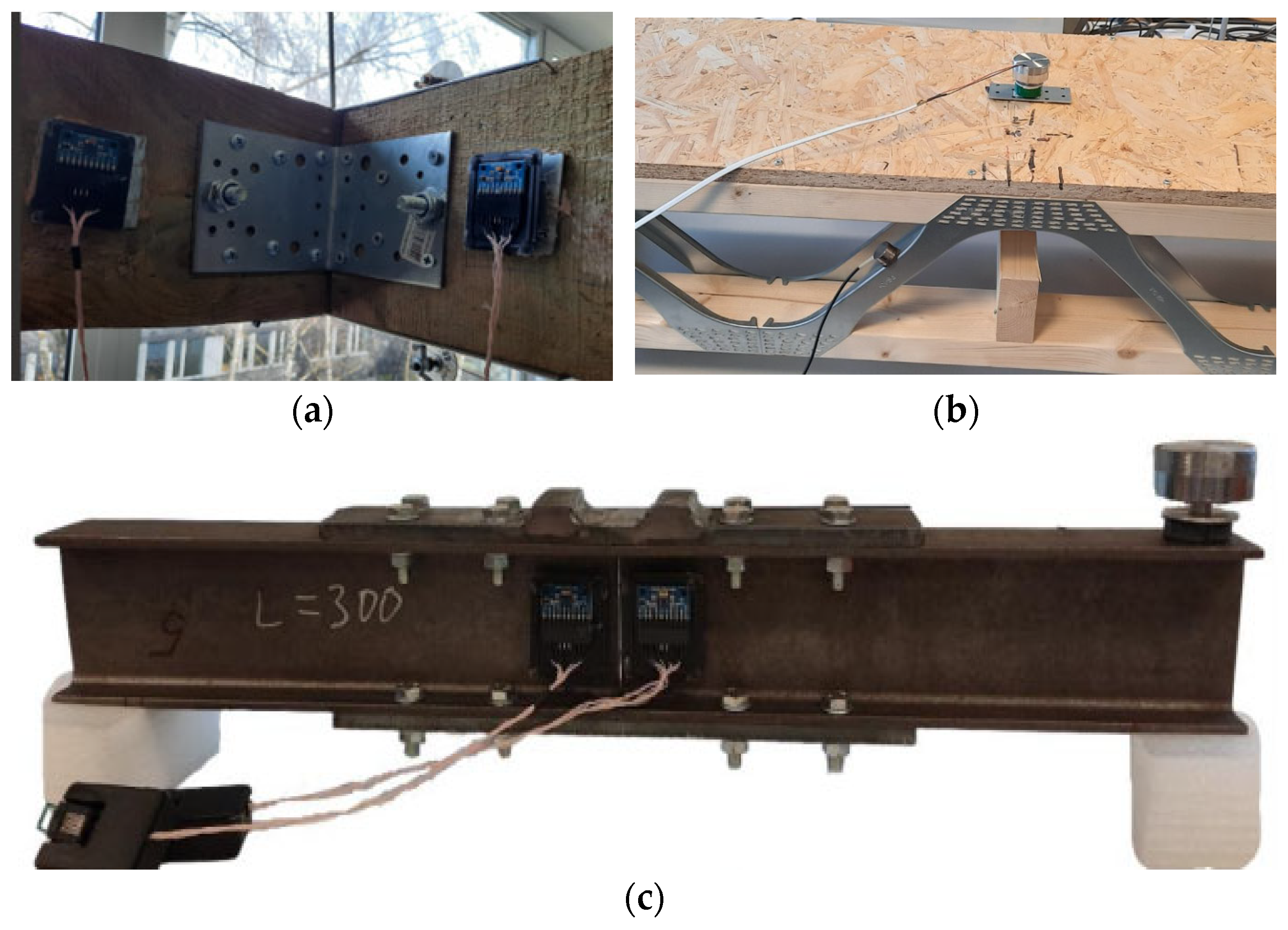
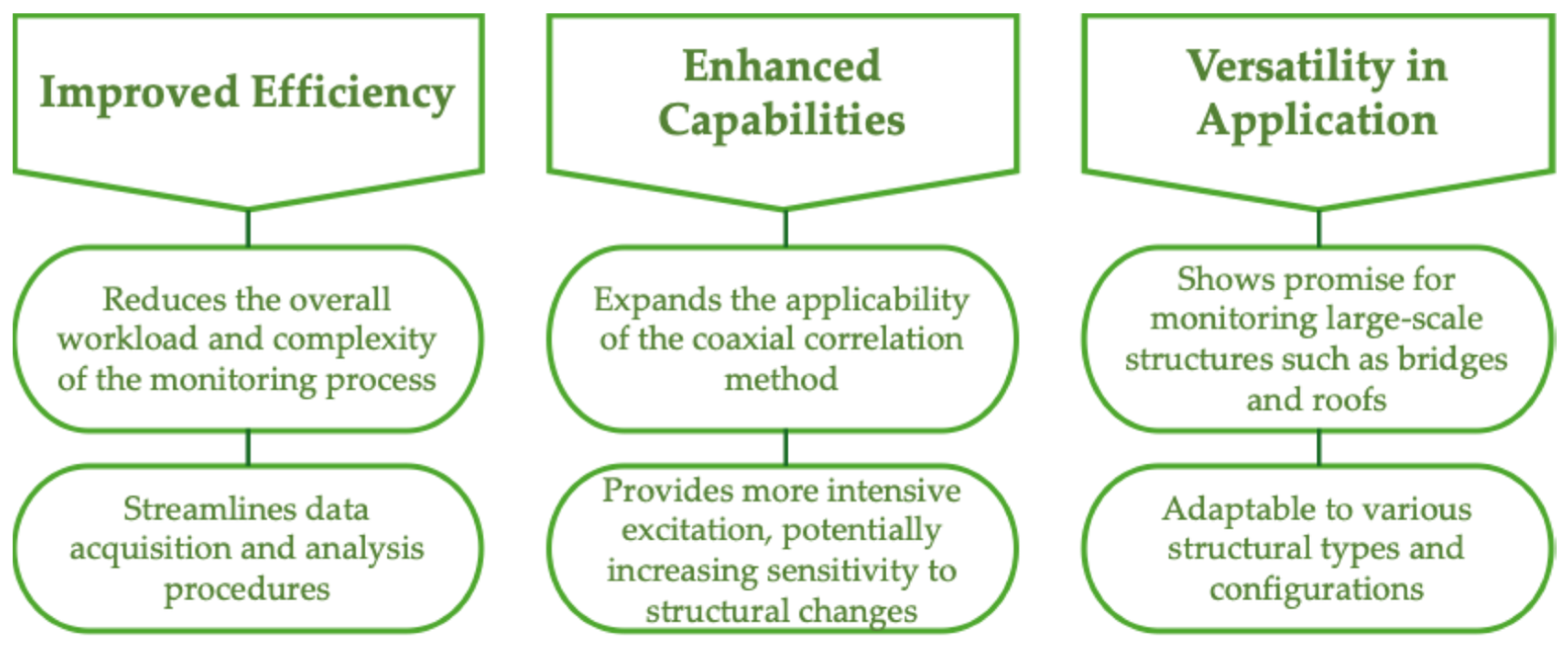
| Method/Device Reference | Energy Range | Typical Application | Advantages | Disadvantages |
|---|---|---|---|---|
| Schmidt Hammer [1] | Low-energy impacts | Field testing | Portable, simple operation | Limited energy output, surface-dependent results |
| Electrodynamic Vibration [2] | Low-to-medium energy | Laboratory/field | Controlled frequency range | Complex setup, requires power source, maintenance-intensive |
| Impact Hammer [3] | Adjustable energy | General NDT | Versatile, various tip options | Operator-dependent results, inconsistent energy transfer |
| Explosive Charges [4] | High-energy impacts | Laboratory only | Extreme energy simulation capability | Significant safety hazards, specialized facilities required, non-repeatable |
| Electrodynamic Accelerator [5] | High-energy | Laboratory research | Precise control of impact parameters | Expensive, complex maintenance, requires trained personnel |
| Laser-Induced Shock [6] | Wide energy range | Precision applications | Non-contact, high repeatability | High equipment costs, sensitive to surface conditions |
| NDT Method | Description/Application | Pros | Cons |
|---|---|---|---|
| Visual Inspection Testing (VT) | Basic inspection for surface features without complex instrumentation | Simple, quick, low cost; no special equipment needed; immediate results | Limited to surface defects; subjective; depends on inspector experience |
| Dye Penetrant Testing (PT) | Surface crack and defect detection using dye penetration | Easy to perform; detects surface-breaking defects; relatively low cost | Requires surface cleaning; limited to surface defects; sensitivity affected by surface finish |
| Magnetic Particle Testing (MT) | Used for detecting surface and near-surface discontinuities in ferromagnetic materials | Highly sensitive for surface and near-surface flaws; quick and cost-effective | Only applicable to ferromagnetic materials; surface preparation needed |
| Electromagnetic Testing (ET) | Uses electromagnetic properties for detecting defects; enhanced by machine learning algorithms | Non-contact; applicable to conductive materials; adaptable with sensor types; can detect surface and subsurface defects | Sensitive to surface condition; limited penetration depth; environmental noise interference |
| Thermal/Infrared Testing (IR) | Detects defects by recording thermal contrast due to discontinuities; enhanced with multi-feature fusion and ML | Non-contact; can scan large areas; good for detecting delaminations, corrosion | Limited by depth penetration; sensitive to environmental influences; resolution trade-off |
| Radio-graphic Testing (RT) | Uses X-rays or gamma rays to detect internal defects | High penetration depth; good visualization of internal features; high resolution | Expensive equipment; safety concerns with radiation; requires skilled operators |
| Acoustic Emission Testing (AE) | Detects transient elastic waves generated by defect-related events | Real-time monitoring; sensitive to crack initiation and growth; useful for in-service monitoring | Requires interpretation expertise; background noise interference; limited localizing ability |
| Ultrasonic Testing (UT) | Inspects internal features using ultrasonic waves; can include phased array and 3D positioning | High sensitivity; applicable to many materials; can detect small internal flaws | Coupling medium required; surface preparation needed; sensitivity to geometry and orientation |
| Computed Tomography (CT) | High-resolution 3D imaging for micro- and nano-scale defect characterization | Excellent spatial resolution; quantitative defect characterization; visual 3D representation | High cost; time-consuming; requires complex data processing; sample size and material limits |
| Fluorescent Magnetic Testing (FMT) | Uses magnetic fields and fluorescence to enhance defect detection; signal processing with advanced algorithms | Enhanced defect visibility via fluorescence; sensitive to cracks and voids | Requires magnetization; surface access needed; complex signal processing |
| Temporal-enhanced Ultrasound (TeUS) | Uses ML to analyse temporal RF ultrasonic data sequences for improved imaging | Improved signal interpretation; increased detection accuracy; can handle complex data | Requires large datasets for training; complex implementation; computation intensive |
| Synthetic Aperture Focusing Technique (SAFT) | Enhances ultrasonic imaging precision, especially for weld flaw detection | Improved image clarity and flaw detection; increased resolution | Computationally intensive; requires high-quality raw data; sensitive to noise |
| Pattern Recognition / Image Processing | Applied in interferometric NDT to identify defects through Singular Value Decomposition and other techniques | Automated defect detection; improves sensitivity; reduces human error | Dependent on quality of input signals; requires advanced computational resources |
| Application | Reference |
|---|---|
| Powder compaction in pressing operations | [17] |
| Direct displacement of conductive particles | [18] |
| Plastic deformation of sheets and tubes in stamping processes | [19] |
| Solid-state welding and the formation of high-strength tubular joints | [20] |
| Main Beam | Additional Beam | |
|---|---|---|
| Material | S355 strength class steel | S355 strength class steel |
| Length, m | 2 | 3 |
| Cross-section | HEA 100 | HEA 100 |
| State 1 | State 2 | |
|---|---|---|
| Plate thickness, mm | 4 | 8 |
| Number of bolts | 8 | 8 |
| Bending moment capacity, kNm | 5.1 | 6.9 |
Disclaimer/Publisher’s Note: The statements, opinions and data contained in all publications are solely those of the individual author(s) and contributor(s) and not of MDPI and/or the editor(s). MDPI and/or the editor(s) disclaim responsibility for any injury to people or property resulting from any ideas, methods, instructions or products referred to in the content. |
© 2025 by the authors. Licensee MDPI, Basel, Switzerland. This article is an open access article distributed under the terms and conditions of the Creative Commons Attribution (CC BY) license (https://creativecommons.org/licenses/by/4.0/).
Share and Cite
Mironovs, V.; Usherenko, Y.; Zemcenkovs, V.; Kurtenoks, V.; Lapkovskis, V.; Serdjuks, D.; Stankevics, P. Novel Pulsed Electromagnetic Field Device for Rapid Structural Health Monitoring: Enhanced Joint Integrity Assessment in Steel Structures. Materials 2025, 18, 2831. https://doi.org/10.3390/ma18122831
Mironovs V, Usherenko Y, Zemcenkovs V, Kurtenoks V, Lapkovskis V, Serdjuks D, Stankevics P. Novel Pulsed Electromagnetic Field Device for Rapid Structural Health Monitoring: Enhanced Joint Integrity Assessment in Steel Structures. Materials. 2025; 18(12):2831. https://doi.org/10.3390/ma18122831
Chicago/Turabian StyleMironovs, Viktors, Yulia Usherenko, Vjaceslavs Zemcenkovs, Viktors Kurtenoks, Vjaceslavs Lapkovskis, Dmitrijs Serdjuks, and Pavels Stankevics. 2025. "Novel Pulsed Electromagnetic Field Device for Rapid Structural Health Monitoring: Enhanced Joint Integrity Assessment in Steel Structures" Materials 18, no. 12: 2831. https://doi.org/10.3390/ma18122831
APA StyleMironovs, V., Usherenko, Y., Zemcenkovs, V., Kurtenoks, V., Lapkovskis, V., Serdjuks, D., & Stankevics, P. (2025). Novel Pulsed Electromagnetic Field Device for Rapid Structural Health Monitoring: Enhanced Joint Integrity Assessment in Steel Structures. Materials, 18(12), 2831. https://doi.org/10.3390/ma18122831








